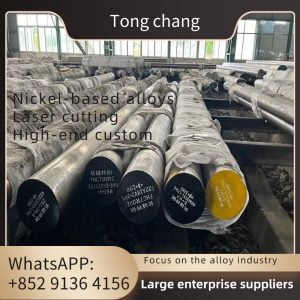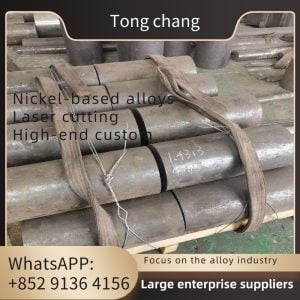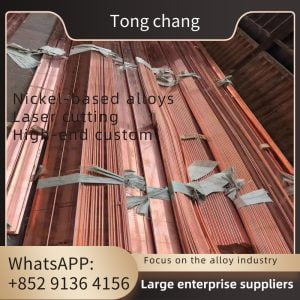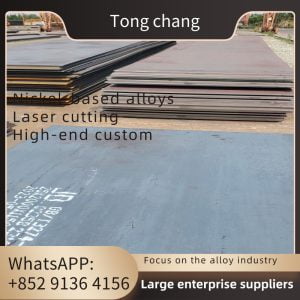| Carbon Steel Tubes: | A179, A192, SA210 Gr A1/C, A106 Gr B, A333 Gr3 Gr6 Gr8, A334 Gr3 Gr6 Gr8, 09CrCuSb, DIN 17175 St35.8 St45.8, EN 10216 P195 P235 P265, GB/T3087 Gr10 Gr20, GB/T5310 20G 20MnG, | O.D.: | 25-63MM |
|---|---|---|---|
| FPI: | 8-30MM | Fin Height: | <200MM |
| Fin Thickness: | 1.5-3.5MM | ||
| High Light: | A192 square fin Tube, Economizers square fin Tube | ||
ASTM A192 Carbon Steel Welding HH Type Square Finnrf Tube For Economizers
The HH Finned Tube economizer features rectangular fins, similar to squares, with an edge length twice that of the base tubes, enhancing the heating surface area.
Rectangular fins are welded onto two steel base tubes, forming the HH or Double H Fin Type Tubing. The welding process used in HH Finned Tubes involves flash resistance welding, resulting in high fusion rates, excellent tensile strength in the welds, and good thermal conductivity.
This type of economizer can also produce dual tube "double H" fin tubes, known for their sturdy structure, suitable for longer tube row applications.
| Material | Grade |
| Carbon Steel Tubes | A179, A192, SA210 Gr A1/C, A106 Gr B, A333 Gr3 Gr6 Gr8, A334 Gr3 Gr6 Gr8, 09CrCuSb, DIN 17175 St35.8 St45.8, EN 10216 P195 P235 P265, GB/T3087 Gr10 Gr20, GB/T5310 20G 20MnG, |
| Alloy Steel Tubes | A209 T1 T1a,A213 T2 T5 T9 T11 T12 T22 T91,A335 P2 P5 P9 P11 P12 P22 P91,EN 10216-2 13CrMo4-5 10CrMo9-10 15NiCuMoNb5-6-4 |
| Stainless Steel Tubes | TP304/304L, TP316/TP316L TP310/310S TP347/TP347H |
| Copper Tubes | UNS12200/UNS14200/UNS70600, CuNi70/30, CuNi 90/10 |
| Titanium Tubes | B338 Gr 2 |
| Type | Description | Base tube | Fin specification (mm) | ||
| O.D. (mm) | Fin pitch | Fin height | Fin thick | ||
| Embedded | G-type fin tueb | 16-63 | 2.1-5 | <17 | ~0.4 |
| Extruded | Single metal combined metal | 8-51 | 1.6-10 | <17 | 0.2-0.4 |
| Low fin tube t-type fin tube | 10-38 | 0.6-2 | <1.6 | ~0.3 | |
| Bamboo tube corrugated tube | 16-51 | 8-30 | <2.5 | / | |
| Wound | l/kl/ll type fin tube | 16-63 | 2.1-5 | <17 | ~0.4 |
| String | String fin tube | 25-38 | 2.1-3.5 | <20 | 0.2-0.5 |
| U-type | U-type tube | 16-38 | / | / | / |
| Welding | HF-welding fin tube | 16-219 | 3-25 | 5-30 | 0.8-3 |
| H/HH type fin tube | 25-63 | 8-30 | <200 | 1.5-3.5 | |
| Studed fin tube | 25-219 | 8-30 | 5-35 | φ5-20 | |
Key Specifications
- Max. Working Temperature: 300°C
- Atmospheric Corrosion Resistance: OK
- Mechanical Resistance: Good
- Fin Material Options: Copper, Aluminum, Carbon Steel, Stainless Steel
- Base Tube Material Options: Various materials available, such as Carbon Steel Tube, A179, A192, A210, Stainless Tube A269/A213 T5 T11 T22 304 316
Advantages
The primary advantage of using finned tubes lies in enhancing heat transfer from a hot fluid to a colder fluid through a tube wall. This is achieved by increasing the outside surface area compared to the inside surface area. Finned tubes offer improved heat transfer rates, especially when the heat transfer coefficient of the fluid inside the tube significantly exceeds that of the fluid outside the tube.
By employing finned tubes, the overall heat transfer rate is increased, reducing the total number of tubes required for a given application. This, in turn, leads to a decrease in equipment size and can lower project costs in the long run. In many cases, a single finned tube can replace multiple bare tubes at a fraction of the cost and volume.
Finned tubes are particularly beneficial in applications where heat transfer occurs between a hot fluid and a colder fluid through a tube wall, such as in air heat exchangers. The increased surface area provided by fins helps compensate for lower heat transfer coefficients on the outer side of the tubes. The flow pattern of a finned tube exchanger is commonly crossflow, but can also be parallel flow or counterflow.
Overall, fins are essential for augmenting the effective surface area of heat exchanger tubing, especially when the heat transfer coefficient on the outer surface of the tubes is substantially lower than on the inner side. Finned tubes are commonly used for transferring heat from liquid to gas, vapor to gas (e.g., steam to air heat exchangers), and thermic fluid to air heat exchangers.
The efficiency of heat transfer depends on the temperature difference between the fluids, the heat transfer coefficients, and the exposed surface areas of the fluids involved.








